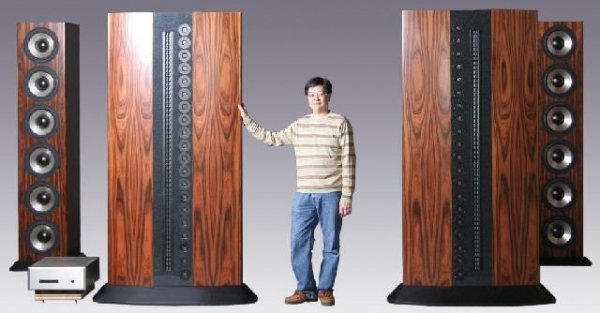Since I read about the Harman Kardon papers on multiple subwoofers, I have wanted to try this… I had full range speakers but the bass while potent could be better.. I always had in mind the huge bass the Genesis were capable of and I was nowhere that. I also measured my bass output and there more peak and valleys than any mountain chains one is likely to see… Using lot of Tube traps in the room help a bit, especially in reducing the magnitude of these irregularities but they remain there so , I lived with it since my system did work extremely well … until I stumble upon Earl Geddes multi-sub approach… Tired it and to this day , I have never heard better bass in my room or anybody’s room or anybody’s .. I repeat I was essentially flat from 14 to 150 Hz with Sunfire and Paradigm subs... Yes, the Sunfire in the corner allowed me 14 Hz at a little over 100 dB, most satisfying I must tell you
The usual left and right configuration, i-e subs flanking main speakers may work, I have not tested it. You are limiting your options severely by doing that since all that you would be doing is to try to push more bas from your mains positions which we remember wasn’t the best for bass. So we have to think asymmetry. Earl Geddes has come with an interesting and simple positioning method. I hope Dr Geddes is reading this and his corrections/comments are most welcome. I hasten to say that while is method is similar to the Yeti , Duvandier studies, they are not identical as the placement of subs in Geddes's recommendation does not follow the symmetrical arrangement the Harman Study is based on:
There is a degree of commitment in this. If one thinks that they will simply drop a third sub and voila! Great bass, one would be severely mistaken... If one is an audiophile with any experience one already knows, there is no free lunch in this hobby.
You need to have some measurements tools. Yes, you will have to measure and the technique is somewhat unusual but it does work. Attempting to do this only by ears is the surest way to mess everything up.
First use at least 3 subs. For experimentation purposes, the subs don’t even have to be identical… They must be good , decent subs, at very least. Whether your mains are full or limited range , use three subs. Make sure all the subs are in the front (with respect to your listening position) volume of your room.
You need subs with infinitely adjustable Level, Crossover and phase controls. The phase is particularly important, I am not sure and simple switch will do…
Place One sub in one corner behind the front speakers. Say left or right corner. It must one of the corners behind the speakers
Place the second sub halfway (more or less) between your listening position and the plane of the front speakers.
Place the third subs along the opposite wall, if possible off the floor, should still be in the first half plane that is in front of you, not behind.
This person to whom I am indebted for such vast improvement in my former system has because I simply read his explanations and was able to improve my system substantially. His explanations are clear and concise. He also post some graphs.
Go HERE.
I sincerely would like Earl Geddes to post on this thread… What I have attempted to describe in this post are his ideas. The results for were spectacular… Not only in the bass , the system sounded much better with a cleaner more articulate midrange and a seemingly more linear dynamic scale … and the bass people is to die for … My next move will be to marry this method with an Infinite baffle.. So far not possible, I am not sure the tenants would be pleased ..


















